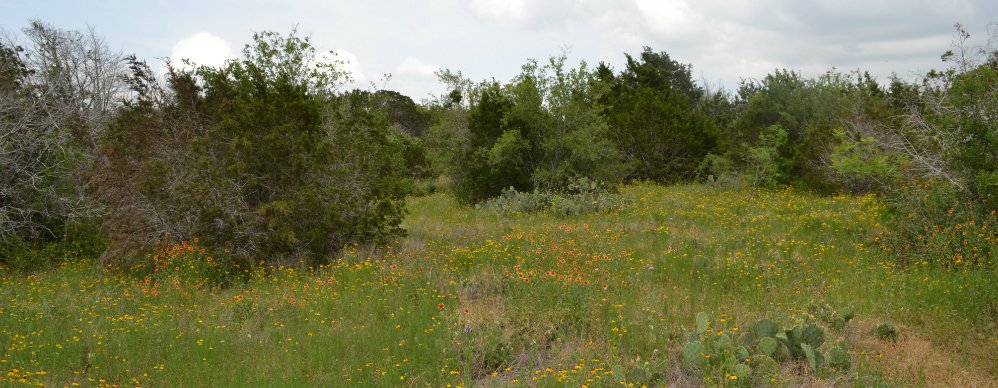Native Bee Needs — Identify and Protect
Once you are familiar with the basics of what native bees need, the next step is determining if those resources exist on your property. Survey your property to evaluate if it already contains diverse patches of flowering herbaceous plants or stands of flowering shrubs and trees. Observe these patches or stands at different times of day to see which plants are most heavily used by bees and other flower-visitors. Patches of good-quality native flowering plants will be important sites to manage and protect within the framework of your property's wildlife management plan.

Existing nest resources will be a little harder to recognize than patches of flowering plants, but general nesting habitats across a property can be roughly demarcated. Brush piles, downed wood, and standing dead trees represent potential natural nesting sites for tunnel nesting bees and bumble bees. Well-drained, sparsely vegetated patches of bare ground are preferred nesting habitat for many ground-nesting bees.
Ground-nesting bee activity can be difficult to observe because there is often little above-ground evidence of the nests. However, if you are patient, you can sometimes observe female bees perched just inside the entrance to their nest, preparing to depart for a foraging run, or flying low over the ground searching for their nest entrances or mates. Ground nest entrances may resemble small ant mounds, with small piles of excavated earth around the hole, or a cluster of holes in the ground. They can range in size from 1/8 to 1/2 inch in diameter, depending on the species. Bumble bees, on the other hand, do not dig their own nests but rather take up residence in abandoned rodent burrows or tussocks of grass in areas of thick herbaceous vegetation.
Refer to The Xerces Society for Invertebrate Conservation's Pollinator Habitat Assessment Form and Guide: Natural Areas and Rangelandsto assess resources already present on your property, identify shortfalls, and potential management needs.